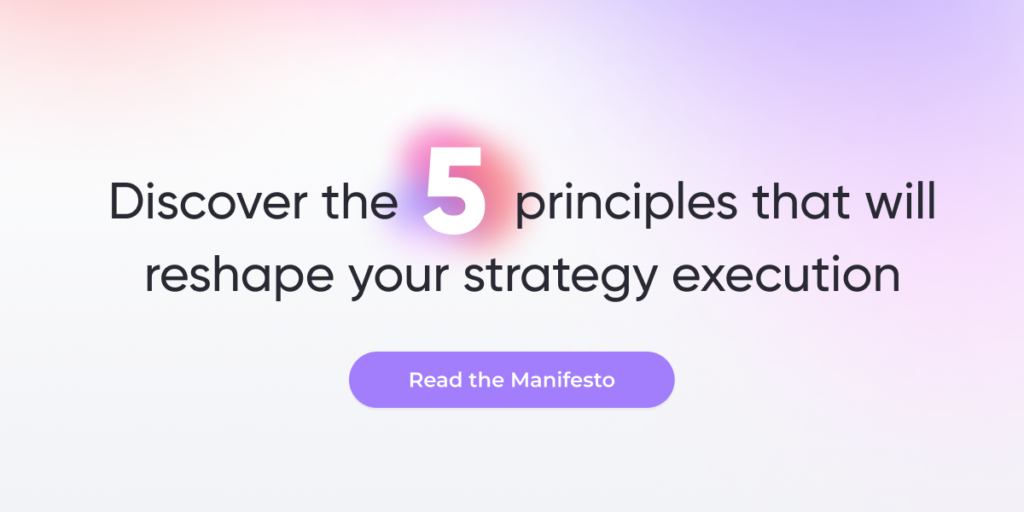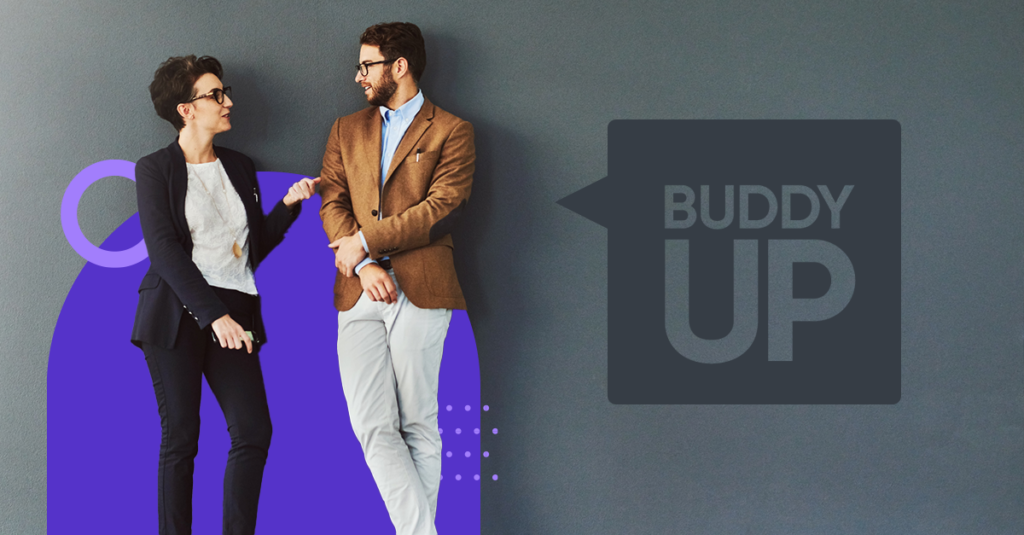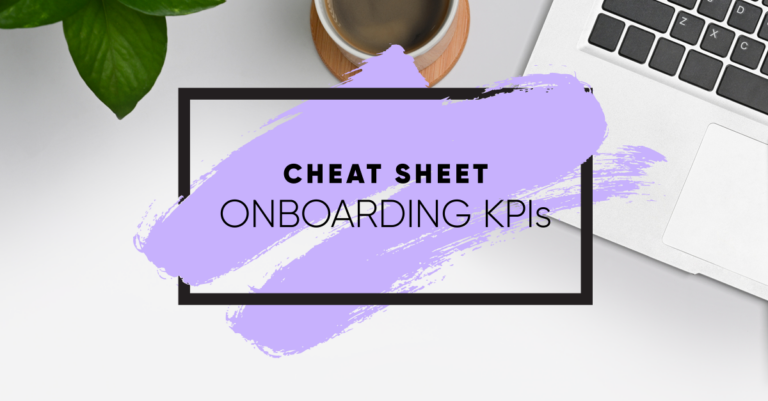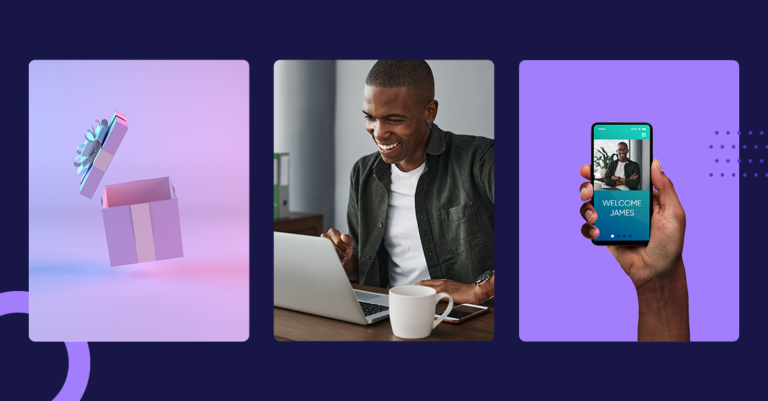We all know what it’s like to land a new job—the thrill of receiving an offer, the anticipation of new challenges, and hopes for career advancement. We also know what it’s like to start that new job, often with excitement and stress in equal measure.
A new employee’s first day through the end of the first three months is a crucial window of time to reinforce that excitement and alleviate any anxiety—especially considering a third of them are likely to quit within those 90 days.
That’s why a positive onboarding experience is so important. Successful onboarding programs often include an onboarding buddy to welcome a new hire and help them ramp up.
In this blog, we’ll delve into the benefits of implementing an onboarding buddy program and provide you with five steps to establish and maintain one. So, let’s dive in and discover how you can make your new hires’ onboarding journey truly remarkable.
What is an onboarding buddy?
Buddies are seasoned employees who play a pivotal role in connecting, engaging, and supporting new hires throughout their first 90 days.
New employees are coming into an unfamiliar environment with different processes and an all-new group of colleagues. An onboarding buddy is a friendly face among the crowd dedicated to showing them the ropes and making them feel at ease.
While managers hold the primary responsibility for training new employees, volunteer buddies are part of a team effort to foster a positive onboarding experience. They help new hires navigate the ins and outs of their environment and serve as a reliable source for any questions that arise.
30% have left a job within the first 90 days of starting
2022 Job Seeker Nation Report
Benefits of an onboarding buddy program
An onboarding buddy program produces numerous benefits for new hires, the company’s bottom line, and the buddies themselves.
- Strengthens engagement. Buddies’ friendly guidance makes the onboarding experience more personal and enjoyable, reducing stress and anxiety.
- Speeds up time to full productivity. By providing insights into workflows and processes, buddies help new hires navigate their tasks more efficiently, boosting overall productivity.
- Provides an insider’s perspective. Offering background information on team dynamics and company culture helps new employees integrate seamlessly into the work environment.
- Increases retention. Onboarding buddies contribute to a 52% increase in employee retention, saving companies significant costs from high turnover.
- Develops leadership skills for buddies. Onboarding programs give tenured employees an opportunity to demonstrate and develop their skills as a leader by improving their ability to communicate, mentor, and teach.
Onboarding buddy programs are beneficial for companies of all sizes—especially large, complex organizations whose work environments may be intimidating for new employees.
Companies with strong onboarding programs improve new hire retention by 82% and productivity by more than 70%.
Glassdoor

5 steps to starting an onboarding buddy program
Launching an onboarding buddy program involves selecting the right people, pairing them with their buddies, and instructing them on how to make the most of their time together.
1. Incentivize the program to encourage volunteers
As a token of appreciation, offer them cool perks, including exclusive shirts and a gift card to have coffee with the new hire. Recognize and reward their commitment to helping strengthen company culture through their efforts.
2. Choose employees who embody your company values
Your best bets for successful buddies are highly engaged employees who are committed to the company’s success. These workers are likely to be knowledgeable, patient, and dedicated to working with the new hire according to their individual needs.
3. Match buddies and new hires for compatibility
Consider sending an initial survey to volunteers and new employees to get a feel for their interests and communication styles. Successful programs have demonstrated that ideal pairings are those who work in the same department, report to the same manager, or have similar roles. Cross-functional matches can work well, especially if the pair have complementary functions.
4. Set expectations and offer support
Your best buddies are likely some of your busiest. Be sure they understand the time commitment and support their workload as needed so they can fulfill their obligations to both their manager and the new hire. Ensure the new hire also understands the purpose and limits of their partnership.
5. Connect the new hire with their buddy
Once plans are in place, introduce buddies on the new hire’s first day and have them engage regularly throughout the first 90 days.
Happy employees mean happy customers
Getting started with your new buddy
A successful onboarding program should include thorough instructions and guidance for the employees willing to invest their time and energy. Here are three key responsibilities for onboarding buddies.
Initiate communication. Reach out to your assigned new hire early on and introduce yourself. Consider greeting them on their first day to give them a tour of the facilities and keep them company until their orientation begins. If you’re in a remote company, be sure to call them early in their day so they have a friendly face to guide them.
Make introductions. Introduce new hires to other colleagues and invite them to lunch (virtual or in person) and other informal activities. Connect them to available employee resource groups (ERGs) and other groups with shared interests.
Schedule regular check-ins. Establish a routine for check-ins to discuss progress, address concerns, and simply chat about their experience.
Sample meeting cadence
First 30 days
- Schedule weekly check-ins (15-30 minutes)
- Provide an overview of your role and department
- Offer resources, quick tips, and answers to questions
- Encourage them to touch base to say how things are going
- Take them for coffee (or have a virtual meeting if remote/hybrid)
- Pace their onboarding so it’s not overwhelming
Month 2
Move to biweekly check-ins.
Month 3 and beyond
Check in during the third month once, and make sure they know you’re available moving forward as needed.
The more closely you can keep to this cadence, the better: A pilot program at Microsoft revealed that frequent meetings helped new hires substantially increase productivity.
According to the results, 56% of new hires who met with their onboarding buddy at least once in their first 90 days indicated that their buddy helped them quickly become productive in their role. That percentage increased to 73% for those who met two to three times, 86% for those who met four to eight times, and 97% for those who met more than eight times in their first 90 days.
Pro tips for onboarding buddies
Be proactive. Anticipate new hires’ questions or concerns and offer guidance before they ask.
Share personal experiences. Relate your own experiences when appropriate to help new hires feel more connected to the team.
Provide resources. Share relevant documents, training materials, and any resources that might help them get up to speed.
Make it fun. Facilitate introductions to team members and organize team-building activities to foster social bonds.
Ask for feedback. HR leaders and managers should also survey both buddies to determine what worked, what didn’t, and what aspects could be improved.
33% of high-performance onboarding programs build social networking into onboarding.
Glassdoor
A people-centric onboarding process
The employee experience begins the moment a new hire accepts the position. Their early days in the company can either reinforce their enthusiasm or instill doubt about their choice.
Onboarding buddies are an essential part of forging a positive experience during this critical time. Their involvement can have a significant impact on a new employee, which affects engagement, retention, and productivity.
An onboarding buddy program is a valuable way to quickly integrate new hires and boost their long-term job satisfaction. Ultimately, such programs build a supportive culture where every employee can flourish from the start.
Set your new hires up for success with personalized onboarding journeys
Download PDF








